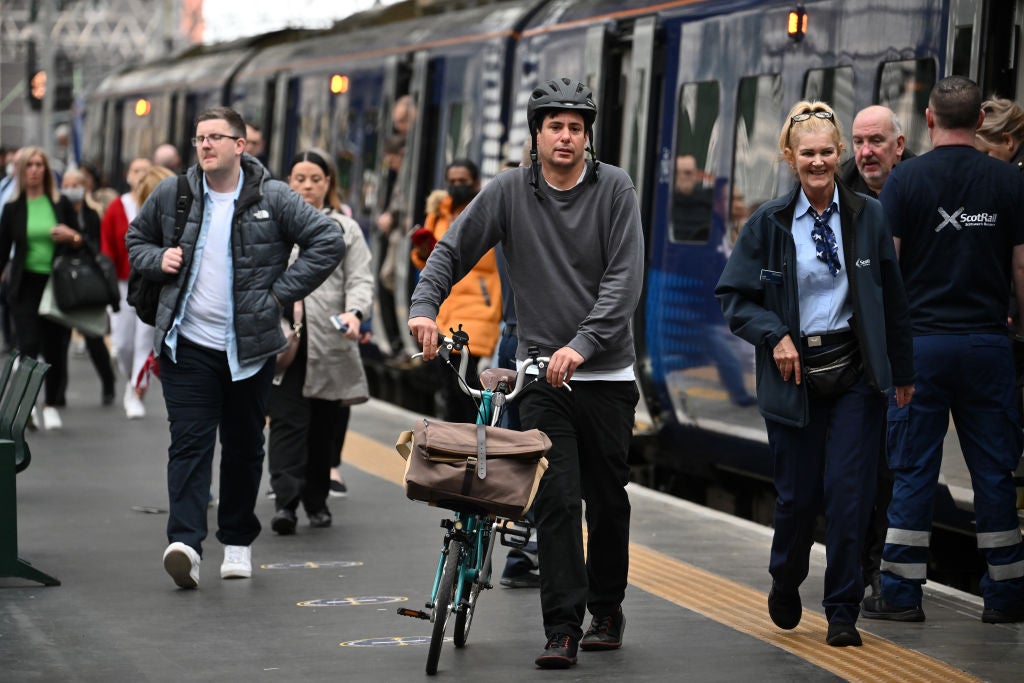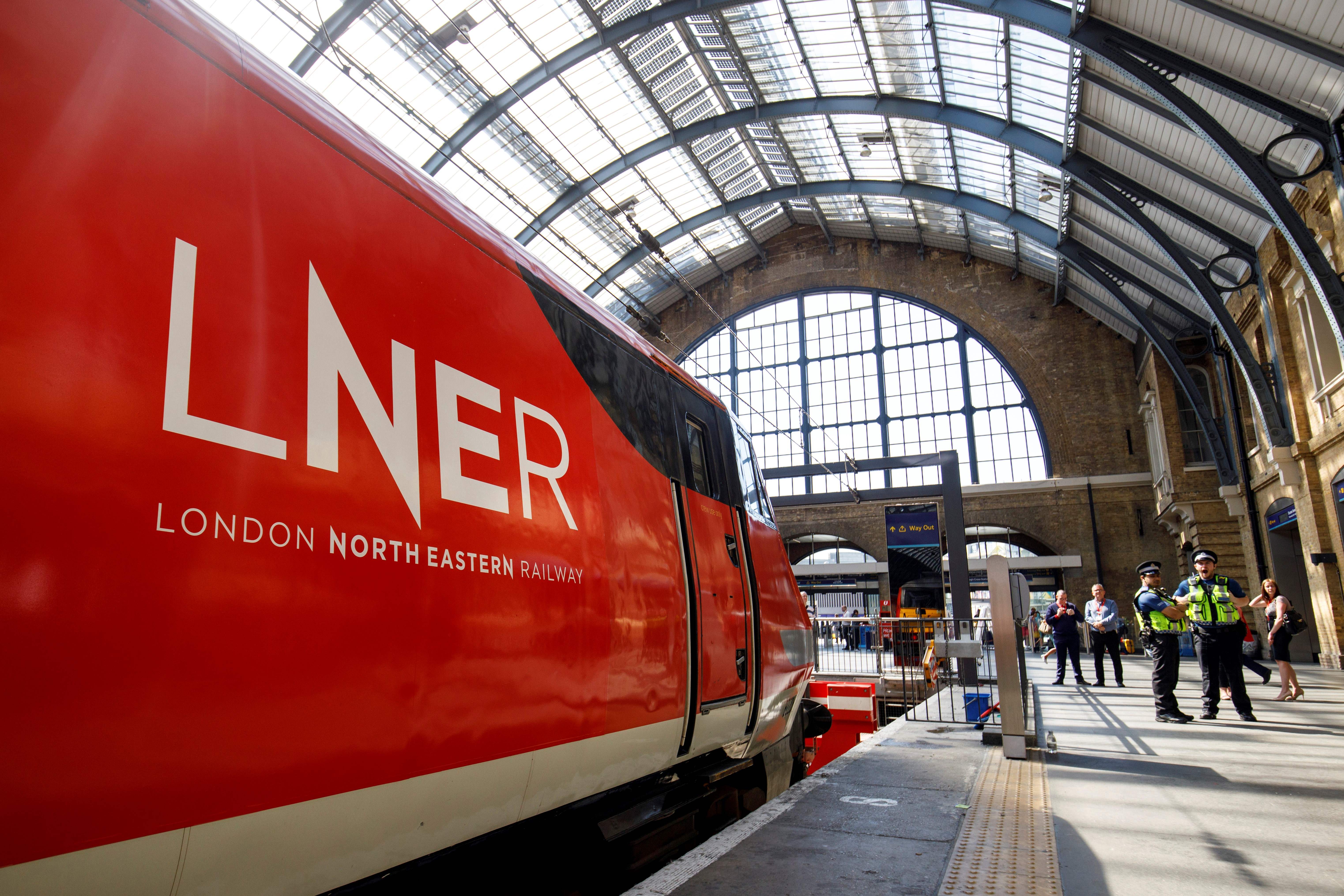Why are rail fares so much more expensive than air travel?
As the candidates to become the next prime minister seek to out-cut each other on tax, the huge subsidies from taxpayers to rail passengers are certain to be slashed, writes Simon Calder


One transport perennial tops the list of recurring topics for which there is an apparently insatiable readership. The headline is usually something along the lines of: “For less than the price of a Newcastle-London rail ticket, I flew instead via continental Europe.”
The latest, in May, involved a Sunderland football fan flying via Menorca to reach London for a football match. He claimed to pay £23 one way compared with “a return train fare of £260”.
Such stories rarely bear close scrutiny, since they inevitably compare the highest “walk-up” rail fare against budget airline tickets bought in advance. Yet a proportion of the travelling public laps up these articles. And such tales highlight a perennial problem: why are rail fares higher than air?
In a summer where British Airways is grounding domestic flights by the dozen each day, it is easy to find counter-examples. BA has precisely four seats from London to Glasgow tomorrow, all on evening departures from City airport in Docklands, each priced at £421.
But anyone hoping to travel from the English capital to Scotland’s largest city has many more alternatives on the West Coast main line.
Tomorrow morning at 7:30am, the first fast train of the day will depart from platform four at London Euston for Glasgow Central. The lowest one-way fare is an advance ticket at £179. Four and a half hours and 401 miles later, the express is scheduled to arrive on platform one at noon.

For travellers from the capital, easyJet can offer flights from Gatwick at 8:20am or 8:55am, reaching Glasgow airport 90 minutes later, for a fare of £80 or less. Even with the journey to the Sussex airport – by heading directly away from Glasgow – and from the arrival airport, city centre-to-city centre passengers will be faster by air.
The reality is that the airline edge is probably greater. Few travellers live in the heart of a city and need to travel to the centre of another one. Britain’s biggest budget airline can offer flights from Luton and Stansted at similar prices.
All the easyJet passengers, of course, face onerous security controls as well as the cancellation roulette that hits many flights these days.

In the olden days, when British Airways was charging astronomical sums for the Heathrow-Glasgow shuttle (with a guarantee that you would fly if you turned up just 10 minutes before departure), flying was the classy way to travel between the two cities. Today, with faster and more reliable trains, many of us will cheerfully pay a premium to remain at ground level and enjoy the superb scenery.
But there are limits, and the airlines know that.
Carriers have decades of experience of nimble pricing – and are adept at charging a dozen different fares for the same flight. They want to fill every seat and maximise revenue. They rarely attract the opprobrium heaped on rail firms for high fares.
Airlines have a “booking curve” that is designed to start 11 months ahead with very cheap fares and finish very expensively an hour before departure. It’s the dark art of “yield management”. In contrast, Avanti West Coast will sell me a ticket only 11 weeks ahead, even though the firm knows, and I know, that the 7:30am will be departing every weekday a year from now.
Avanti West Coast also knows how low it must cut fares in order to try to fill the train. And it also knows that, since the coronavirus pandemic, all its losses will be met by the taxpayer
Yield management is the most effective tool in travel. It allocates resources appropriately according to demand and propensity to book ahead. Typically easyJet offers some tickets on a 90-minute flight for £25 and others – as I found to my cost when needing a Glasgow-Gatwick flight urgently – for £225.
The average fare they will need to make a tidy profit is in the range £60-£70, with “ancillaries” such as assigned seats and baggage, contributing a good chunk.
Increasingly the base fare for a flight is only the start of negotiations. I am flying next month from Luton to Dublin for £12.99 – one penny less than the Air Passenger Duty (APD) that Ryanair must pay to the chancellor when I step aboard the flight.
Most people will pay for seat selection and baggage that is larger than a small backpack. On trains you can bring your body weight in baggage for free.
Airlines are also much more focused on filling every seat they possibly can – ideally nine out of 10. And, while Train operators do not publish their “load factors”, I predict that between London and Glasgow it averages around 50 per cent. It varies, of course, from one station to the next.
Unlike the plane, the Avanti West Coast train allows many possible journeys besides the end-to-end journey: business people heading from London to Warrington (surely no leisure passengers would pay the £156 fare for that 104-minute stretch alone?), commuters from Wigan to Preston (£7.50, 12 minutes) and travellers from northwest England to southern Scotland – enticed by the £14.40 Advance fare from Warrington to Glasgow.

Per mile, the second part of the journey costs just 6p, compared with 93p for the first part. Mad? Not necessarily. The train operator knows from experience that companies are prepared to pay fares that the rest of us would find ridiculous – and will avoid by catching a much cheaper London Northwestern Railway service from Euston to Crewe and a Northern service from there to Warrington.
Avanti West Coast also knows how low it must cut fares in order to try to fill the train. And it also knows that, since the coronavirus pandemic, all its losses will be met by the taxpayer. The airlines have no such certainty.
Yet as the candidates to be the next prime minister seek to out-cut each other on tax, the huge subsidies from taxpayers to rail passengers are certain to be slashed. The only way that Great British Railways (the imminent reincarnation of British Rail) will be able to provide a decent train service is by bringing in the commercial acumen of the airlines.

The outstanding example already exists: LNER, which is publicly run but largely allowed to get on with flexing fares and raising standards on the East Coast main line from London via Yorkshire and Tyneside to Scotland. It also faces increasingly intense competition: the inter-city budget train operator, Lumo, brings some of the techniques of low-cost airlines to bear on the London-Newcastle-Edinburgh axis: notably High-density, all-standard class seating.
All the evidence from aviation – and the high-speed rail link between Barcelona and Madrid shows that allowing competition to flourish expands the market to everyone’s advantage.
I happen to think that Lumo (part of First Group) has not gone far enough in emulating the budget airlines. It wants to compete with easyJet, but muddies the water by offering child and railcard discounts: the other side of that coin is higher fares for those who do not qualify. Yet removing beneficial pricing conflicts with the widespread notion that the train provides an essential social purpose – the thinking that requires the Treasury to bankroll many journeys from Penzance to Thurso.
Then there is the other side of the “why is rail more expensive than air?” question: why is aviation so cheap? There are good environmental grounds for increasing taxes on aviation (and perhaps ring-fencing the funds for subsidising terrestrial public transport). The government is set not to double APD, but to halve it.
Only the railway can save itself – and that requires the professionals who run the trains to be allowed the freedom to fill trains at whatever fares the market will bear. Just like the airlines do with planes.
All fares researched on Monday 11 July 2022




Join our commenting forum
Join thought-provoking conversations, follow other Independent readers and see their replies
Comments